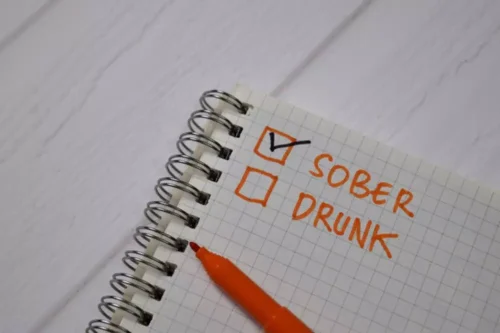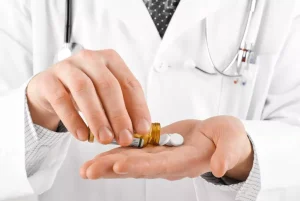Unfortunately, very few studies have investigated crosstolerance between alcohol and opioids at a practical level or in humans. The only class of drugs known to have a direct crosstolerance with alcohol are the benzodiazepines. Animal research has demonstrated that chronic ethanol exposure can lead to the development of crosstolerance to local anesthetics. However, this has not been shown in studies on humans, which points to the importance of psychological factors (i.e., anxiety and expectancy effects) on the relationship.
Pain as a Situational Motivator of Alcohol Use
Impulsivity is multidimensional construct referring to a predisposition for individuals to react quickly in response to an internal or external stimulus, without consideration of the possible negative consequences (Lejuez et al., 2010). While not a prominent trait in chronic pain patients, impulsivity may be especially relevant to individuals with AUD who suffer from chronic pain. These individuals would be in a situation that is analogous to what has been described for opioid analgesic misuse risk in chronic, low-back pain patients who had been prescribed opioid analgesics (Marino et al., 2013). The experience of physical pain also has been reported to be elevated in alcohol dependent patients having high levels of impulsivity, with physical pain being an independent correlate of both subjectively reported and objectively measured levels of impulsivity (Jakubczyk, Brower, et al., 2016). In particular, there seems to be a role for an attention dimension of impulsivity that represents heightened distractibility and compromised cognitive control, both in AUD (Jakubczyk, Brower, et al., 2016) and in opioid analgesic misuse in chronic pain patients (Marino et al., 2013).
Alcohol Use Disorder and Chronic Pain: An Overlooked Epidemic
In the Boston Collaborative Drug Surveillance Program, only one out of 11,882 hospitalized patients who had no prior history of substance abuse and who received narcotics while in the hospital developed a drug dependency [17]. Finally, in a survey of more than 10,000 hospitalized burn patients who received narcotic analgesics, not one case of an iatrogenic addiction was reported [12]. They did find that 22 patients abused drugs after they were discharged, but all of them had a history of drug abuse. Perry states, “these fears persist even though no systematic studies have ever documented that treating acute pain in hospitalized patients with sufficient narcotic analgesia will increase the risk of substance abuse”. Despite consistent evidence from the animal literature, and well-documented historical use of alcohol as an anesthetic (e.g., Shealy & Cady, 2002), only a few experimental studies have been conducted among humans to test the causal effects of acute alcohol administration on laboratory pain reactivity.
Alcohol use disorder
Negative reinforcement models of addiction posit that substance use is motivated, in part, by a desire to alleviate aversive psychological and physical states (e.g., McCarthy, Curtin, Piper, & Baker, 2010). One possibility is that pain may motivate alcohol consumption via a desire to alleviate pain-related negative affect. Negative affect is a central component of pain-processing (e.g., Wade, Dougherty, Archer, & Price, 1996), and it has been suggested that coping with negative affect may be a primary drinking motive among persons with AUD (e.g., Kuntsche et al., 2005). As noted earlier, pain has also been conceptualized as a stressor (Blackburn-Munro & Blackburn-Munro, 2001), and alcohol intolerance symptoms and causes alcohol users may be motivated to drink in response to stress, particularly if they hold expectancies for alcohol-induced tension reduction (Armeli, Carney, Tennen, Affleck, & O’Neil, 2000). Conversely, there is some prospective evidence that older adults who endorse more severe pain or a greater number of painful conditions may ultimately go on to reduce their alcohol consumption (Bobo, Greek, Klepinger, & Herting, 2012; Brennan et al., 2011; Brennan & Soohoo, 2013). However, each of these studies sampled older adults who did not necessarily have chronic pain, reported low levels of baseline drinking, and whose patterns of alcohol use may not generalize to other age groups.
- The second concern regards the presumption that patients with a substance abuse history are more likely to abuse opioid medications [30].
- Extended periods of alcohol exposure induce pain symptoms and exacerbate chronic pain arising from other sources.
- Co-administration of L-type calcium channel blockers and alcohol has also been shown to reduce hyperalgesia during alcohol abstinence, possibly because L-type calcium channel blockers prevent up-regulation of L-type calcium channels that would otherwise occur in the context of chronic alcohol administration (Gatch, 2009).
- In other words, the warning labels on prescription painkiller bottles to avoid alcohol are far more than mere suggestions; they can be life-saving.
- Animal research has demonstrated that chronic ethanol exposure can lead to the development of crosstolerance to local anesthetics.
Estimates of Co-Occurring Pain and Alcohol Use
It also prevents a situation where the patient has to either ask for pain medication or display pain behaviors. Researchers have shown that patients use less pain medication and incur fewer side effects with this method. Pain management in the trauma population has been a major focus of attention for the last two decades following studies showing that patients are generally undermedicated for pain and that high rates of pain while hospitalized can lead to poorer outcomes [5,6].
Diagnostic errors commonly occur because it is often mistaken for other conditions such as a perforated gastric ulcer, myocardial infarction, pulmonary embolism, pneumonia, dissecting aneurysm, and pancreatitis [7]. While radiological tests like a chest x-ray can help narrow mixing alcohol and elavil amitriptyline down the possible causes (e.g., widened mediastinum and left-sided effusion), the definitive imaging method is a contrast CT scan as the signs are usually subtle [8]. The focus of this case report is on an adult patient who experienced a spontaneous rupture of the esophagus.
The potential of alcohol to act as a painkiller has been recognized for a long time, and many drinkers report that they consume alcohol to moderate pain. Research has shown that chronic alcohol use can cause long-term, painful nerve damage, known as alcoholic neuropathy. Increased awareness among healthcare professionals can lead to earlier diagnosis and potentially better outcomes in patients with Boerhave’s syndrome. Timely recognition, appropriate diagnostic evaluation, and immediate surgical intervention are crucial for the management of this life-threatening condition.
The fourth group identified is those patients who have either a current or prior history of opioid abuse, specifically heroin. There are a number of concerns with this group and they must be treated on an individual basis. Discussion of patients with heroin and other drug addictions is beyond the scope of this review. This review will first focus on the scientific evidence that establishes the link between alcohol and trauma.
Even some of the non-dependent mice — 40% of non-dependent male mice and 50% of non-dependent female mice — showed allodynia compared to the alcohol-naïve control group. The researchers found that there was a significant increase in drinking behavior in the group of mice that were dependent on alcohol compared to the non-dependent group. Research suggests that alcohol has a pain-dampening effect and can relieve hyperalgesia — increased sensitivity to pain — even at nonintoxicating doses. This case report highlights the importance of considering Boerhaave’s syndrome in patients presenting with acute chest pain and a history of vomiting or retching. Overall, accurate diagnosis and prompt management play a critical role in the treatment of Boerhaave’s syndrome [14].
Therefore, effective measurement of pain perception can be challenging (Chapman, 2005; Rosier, Iadarola, & Coghill, 2002; Younger, McCue, & Mackey, 2009). Despite this challenge, there are a number of validated for assessments of pain intensity and for evaluating multiple dimensions of the pain experience, as well as overall functioning, that rely on subjective perceptions of pain apart from physiologic or neurologic measurements (Younger et al., 2009). Understanding how alcohol misuse causes pain is complicated by the fact that pain is not only a symptom of alcohol misuse but also a frequent cause of increased alcohol use.
Additionally, we found that the onset of MDE in ALC group was younger than the CTRL group, whether or not they had chronic/severe back pain. Regarding the age of onset of the various conditions, we found that the onset of MDE in the ALC group was younger than in the CTRL group, whether or not either group experienced pain. We looked at the temporal relations between the ages of onset of each of the depressive disorders to determine if onset of ALC, preceded onset of MDE, MDD, or PDD. We found that there were no significantly different temporal patterns in onset of any of the depressive disorders relative to ALC onset. The comparability between ages of onset of alcohol abuse and depressive disorders may be suggestive of overlapping genetic predispositions for these disorders [34]. Despite numerous reports on associations between chronic pain disorders, depressive disorders, and harmful drinking, it is not clear if the burden of a depressive disorder is similar in the presence or absence of ALC, in individuals who also have a chronic pain disorder.
Another explanation for the undermedication of pain is the communication between the patient and the staff. They are also put in the difficult situation of interpreting patients’ nonverbal behavior when they cannot verbally report pain. Investigators have 9 liquor storage ideas for small spaces shown that healthcare workers frequently underestimate the severity of a patient’s pain [12]. They also underestimate a patient’s anxiety, and may misinterpret anxiety as pain, thereby increasing the dose of opioids rather than adding an anxiolytic [18].












